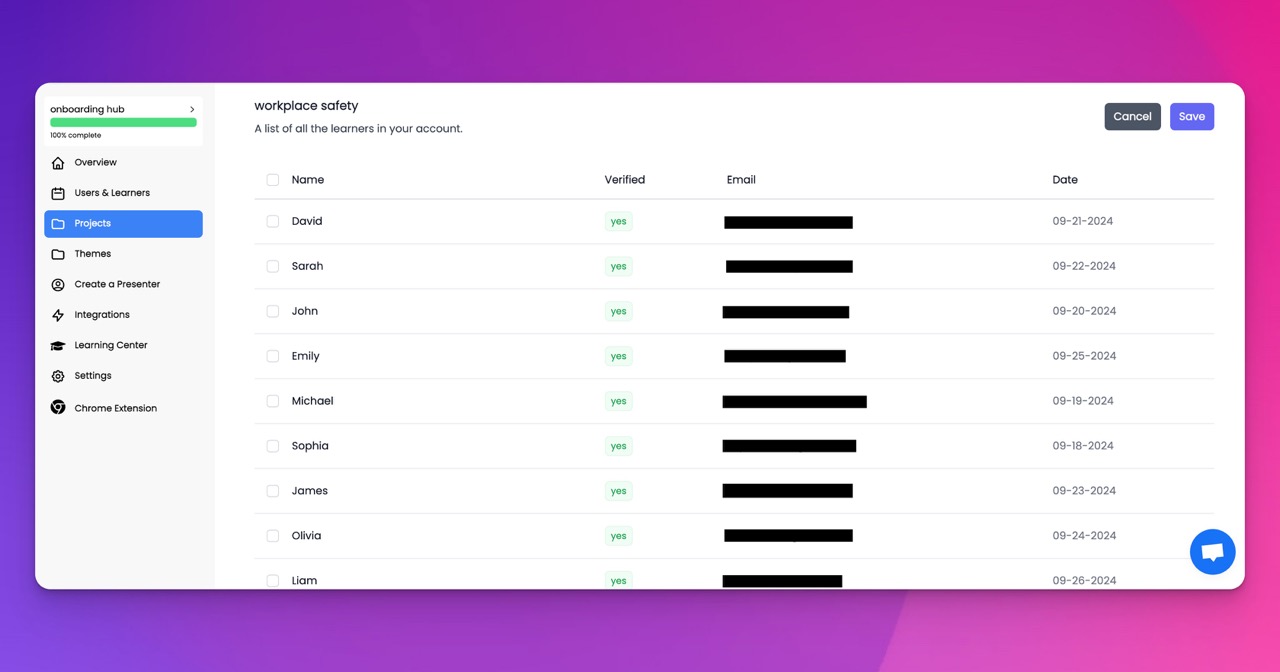🎉 Trainday now integrates with Zendesk and Hubspot 🎉 Trainday now integrates with Zendesk and Hubspot 🎉 Trainday now integrates with Zendesk and Hubspot
🎉 Trainday now integrates with Zendesk and Hubspot
🎉 Trainday now integrates with Zendesk and Hubspot
Contact
Upgrading Vocational Training: Attracting Students with AI-Enhanced Educational Programs
In the evolving landscape of vocational education, where student needs and industry requirements are constantly changing, Artificial Intelligence (AI) is playing a pivotal role in revolutionizing educational programs. "Revolutionizing Vocational Training" focuses on how AI-enhanced programs are not only modernizing curriculum delivery but also making vocational training more attractive to prospective students. By incorporating AI, vocational schools can offer tailored learning experiences, predictive career planning, and direct alignment with real-world job demands, all of which significantly increase the appeal of their programs. This blog post explores the transformative impact of AI in vocational education, detailing how these advancements can attract more students and better prepare them for the workforce.
Tailoring Education to Individual Needs
AI's capability to personalize learning experiences according to individual student profiles is one of its most significant advantages in vocational training.
Personalized Learning Pathways
AI-driven platforms analyze student data to create customized learning pathways, allowing students to progress at their own pace and according to their specific strengths and weaknesses. This personalized approach helps students achieve mastery more efficiently, enhancing their engagement and motivation to learn.
Adaptive Learning Technologies
Through adaptive learning technologies, AI can adjust the difficulty of tasks in real-time based on the student's performance. This ensures that each student is consistently challenged yet not overwhelmed, fostering an optimal learning environment that can cater to a diverse student body.
Aligning Curriculum with Industry Demands
AI enhances the relevance of vocational training programs by ensuring that the curriculum stays aligned with current industry demands, making the programs more attractive to students who seek practical and applicable skills.
Real-Time Curriculum Updates
Utilizing AI to analyze trends and changes in the job market, vocational schools can update their curricula in real-time to incorporate new skills and technologies that are in high demand. This agility ensures that students are learning skills that will be immediately useful, improving their employability upon graduation.
Engagement with Industry Partners
AI tools can facilitate stronger collaboration with industry partners by analyzing job market data and identifying skills gaps. This allows schools to tailor their programs to meet specific industry needs, creating a direct pipeline of qualified candidates from classrooms to workplaces.
Enhancing Student Engagement and Outcomes
AI-driven tools not only attract students by offering personalized and industry-relevant education but also enhance student engagement and learning outcomes through innovative teaching methods.
Gamified Learning Environments
AI can introduce elements of gamification into learning, such as badges, leaderboards, and interactive challenges. This approach can make learning more engaging and fun, particularly for technical and hands-on skills that are central to vocational training.
Virtual Simulations and Augmented Reality
Using virtual simulations and augmented reality, AI provides students with virtual hands-on experiences that are often not feasible in a traditional classroom setting. These technologies allow students to practice and hone their skills in a risk-free environment, building confidence and competence before entering the job market.
Continuous Improvement Through Data
AI not only enhances individual learning experiences but also provides vocational schools with valuable data to continuously improve their educational offerings.
Predictive Analytics
AI's predictive analytics can forecast future industry trends and student performance, allowing institutions to proactively adapt their strategies. This foresight can be crucial in maintaining the relevance and attractiveness of vocational programs.
Feedback Loops
Regular feedback from AI analytics helps schools refine their teaching methods and curriculum to better meet student needs. This continuous improvement cycle ensures that vocational training programs remain at the cutting edge of educational innovation.
Conclusion
"Revolutionizing Vocational Training: Attracting Students with AI-Enhanced Educational Programs" underscores the critical role of AI in transforming vocational education. By providing personalized, engaging, and industry-aligned educational experiences, AI not only attracts a broader spectrum of students but also significantly enhances their readiness for the workforce. As the demand for skilled professionals continues to evolve, AI-enhanced vocational training programs stand out as essential for preparing students to meet and exceed these challenges.
Accelerate Compliance.
Deliver OSHA-Ready Courses Instantly.
Empower your team with data-driven training solutions tailored to your industry's safety standards. Stay compliant, reduce risks, and boost productivity with AI-powered course creation.
